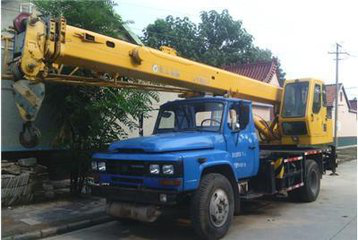Before the work is carried out by the crane, the correct selection of the lifting point position is a crucial step. However, many drivers still cannot accurately determine the position of the center of gravity of an object in most cases. It is only necessary to first estimate the position of the center of gravity, and then use the low-level test to accurately find the center of gravity, and then determine the lifting point. The following Xiao Bian talks to everyone about the five aspects that should be taken into consideration when selecting a crane in the actual operation.
1. When cranes lift various mechanical equipments and components, they should give preference to the original lifting lug of the equipment.
2. If there is no lifting lug, you can bundle the slings at both ends of the device so that the weight points of the lifting points and the weights of the hanging objects are on the same vertical line to prevent the lifting, swinging, and tilting during transportation.
3. When multiple cranes are hoisted, the crane should choose the crane arm with a smaller amplitude. Slender objects choose more lifting.
4. When lifting square components, the four slings should be placed on the four sides of the center of gravity.
5. When the object is lifted and flipped, select the hanging point under the center of gravity of the object, or select the hanging point on the side of the weight center of the object.

In addition, the driver should also pay attention to the operation, the following situations occur, to avoid lifting. Overloading or hanging obliquely does not hang. Heavy objects are not covered with corners. Bundle is not strong or does not meet the requirements of the requirements. There is a floating object on the lifting gear or under the boom, or it is not lifted. For objects buried in the ground or frozen on the ground, objects of unknown weight, and objects staggered together are not suspended.
If the hoisting point is not properly positioned during lifting, the suspended object may be dumped or broken during lifting, resulting in damage to the object, or tilting of the object after lifting, making installation difficult. Any occurrence of any of these situations will inconvenience the follow-up work, so it is very important to choose the correct position of the lifting point. In order to carry out the hoisting operation smoothly, the driver should still have a lot of relevant knowledge in this area and also improve the work efficiency. I hope the above sharing can help everyone.
steel wire Oil Hose Hydraulic Hose SAE 100 R13 R15
Application: suit to use with petroleum base hydraulic fluids, can be used in construction, machine tool and agriculture field.
E.g. Mine hydraulic fluid, oil exploration, crane, forging metallurgy, mining equipment, ships, injection molding machinery, agricultural machinery and various machines tools.etc.
Construction:
Tube: Oil resistant synthetic rubber.
Temperature: -40°C~+100°C.
Reinforcement: four or six layers high tensile steel wire ( 4 W/S 6 W/S )
Cover: abrasion and weather resistant synthetic rubber.
Rubber Hose SAE 100 R13, Rubber Hose SAE 100 R15, High Tensile Steel Wire Hydraulic Hose R15, Hydraulic Hose SAE 100 R13
Hebei Orient Rubber & Plastic Co., Ltd. , https://www.hiteckhose.com
